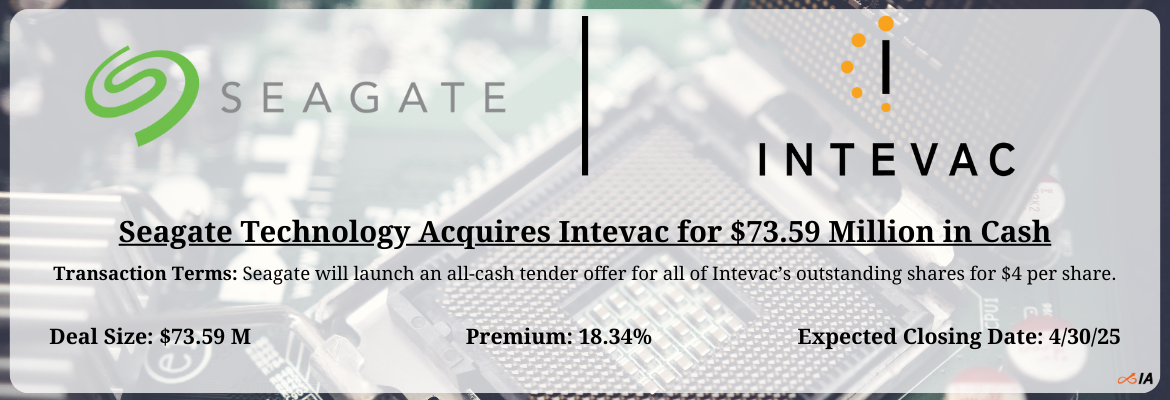
Seagate Technology Holdings plc (STX) entered a merger agreement on February 13, 2025, to acquire Intevac, Inc. (IVAC) through a cash tender offer valued at about $75.46 million.
Under the terms of the agreement, Seagate will acquire all of Intevac’s outstanding shares for $4 per share in cash, representing a premium of 21.36% from the stock’s last close.
At the closing of the merger, Intevac will pay a one-time special dividend of $0.052 per share. Separately, Intevac’s Board has declared a regular quarterly dividend of $0.05 per share, which will be paid on March 13, 2025. The special dividend and the regular quarterly dividend are in addition to the $4 cash consideration in the Transaction.
Intevac is a provider of thin-film processing systems and digital night-vision technologies, specializing in advanced equipment for hard disk drives, defense, and other high-tech industries.
Seagate is a global provider of mass-capacity data storage solutions, offering a comprehensive portfolio of hard drives, solid-state drives, and edge-to-cloud storage systems for consumers and enterprises worldwide.
Two of Intevac’s largest stockholders, Palogic Value Fund and Bleichroeder, who own about 22% of the company’s outstanding shares, have entered agreements to support the merger.
The deal is expected to close in late March or early April 2025.
Houlihan Lokey served as a financial advisor, and Wilson Sonsini Goodrich & Rosati provided legal counsel to Intevac. Meanwhile, Seagate Technology received legal counsel from Wachtell, Lipton, Rosen & Katz.
Seagate Technology is set to pay 1.37 times the sales for Intevac.
For an in-depth analysis of this merger and acquisition transaction, please visit the Deal Metrics page:
Deal Metrics for the acquisition of Intevac, Inc. (IVAC) by Seagate Technology Holdings plc (STX)
The Deal Metrics page for each merger or acquisition includes:
Disclaimer: Please do your own due diligence before buying or selling any securities mentioned in this article. We do not warrant the completeness or accuracy of the content or data provided in this article.
Editor’s Note: Baranjot Kaur contributed to this article